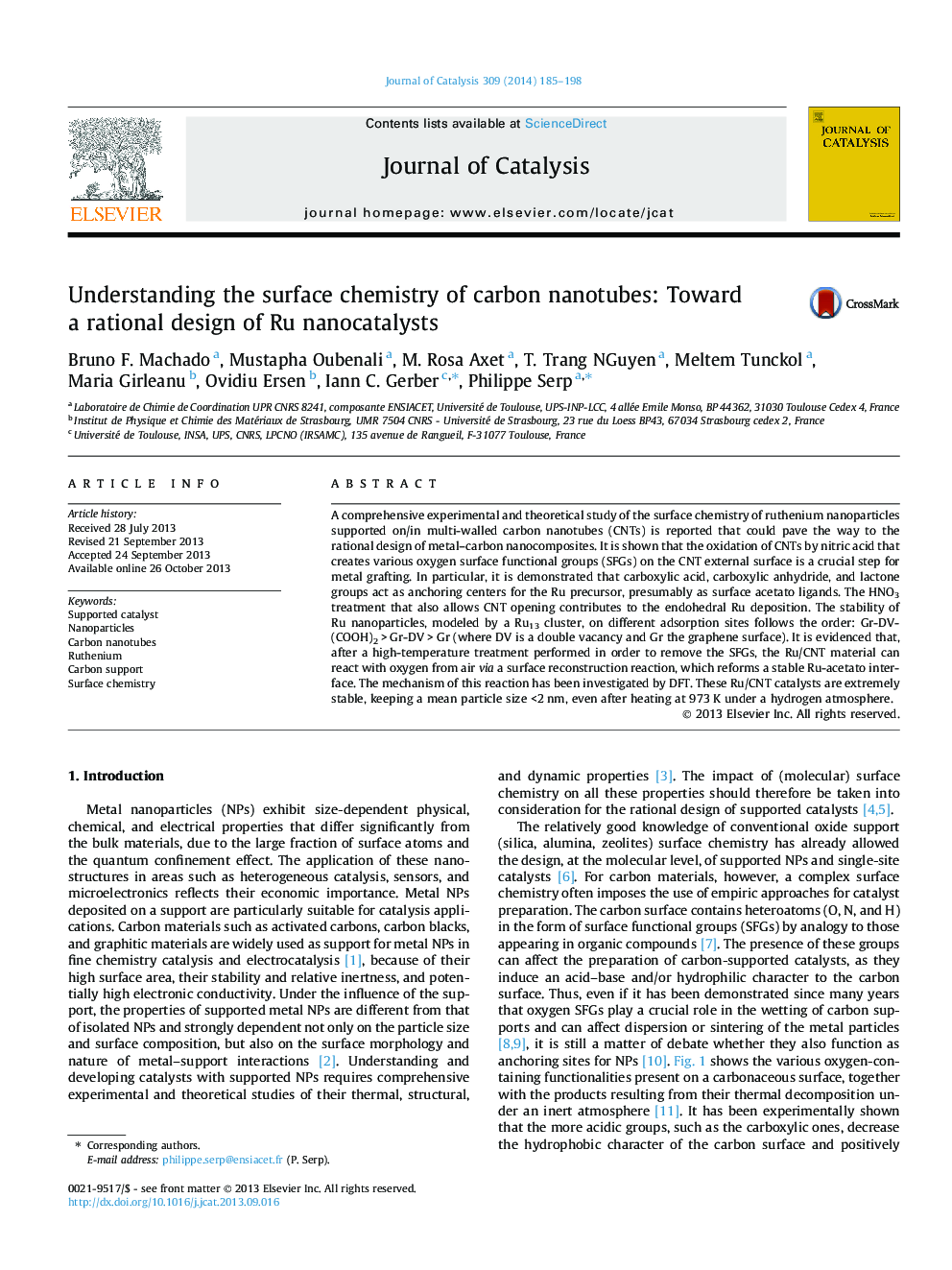| کد مقاله | کد نشریه | سال انتشار | مقاله انگلیسی | نسخه تمام متن |
|---|---|---|---|---|
| 61109 | 47565 | 2014 | 14 صفحه PDF | دانلود رایگان |

• A study of the surface chemistry of ruthenium nanoparticles on/in carbon nanotubes is reported.
• The metal/support interface consists in Ru-surface acetato ligands.
• Decomposition of the Ru-surface acetato ligands interface occurs upon heating under an inert atmosphere.
• A surface reaction operates upon air exposition, leading to epoxy groups and a new Ru-surface acetato ligands interface.
• This study could pave the way to the rational design of metal–carbon nanocomposites.
A comprehensive experimental and theoretical study of the surface chemistry of ruthenium nanoparticles supported on/in multi-walled carbon nanotubes (CNTs) is reported that could pave the way to the rational design of metal–carbon nanocomposites. It is shown that the oxidation of CNTs by nitric acid that creates various oxygen surface functional groups (SFGs) on the CNT external surface is a crucial step for metal grafting. In particular, it is demonstrated that carboxylic acid, carboxylic anhydride, and lactone groups act as anchoring centers for the Ru precursor, presumably as surface acetato ligands. The HNO3 treatment that also allows CNT opening contributes to the endohedral Ru deposition. The stability of Ru nanoparticles, modeled by a Ru13 cluster, on different adsorption sites follows the order: Gr-DV-(COOH)2 > Gr-DV > Gr (where DV is a double vacancy and Gr the graphene surface). It is evidenced that, after a high-temperature treatment performed in order to remove the SFGs, the Ru/CNT material can react with oxygen from air via a surface reconstruction reaction, which reforms a stable Ru-acetato interface. The mechanism of this reaction has been investigated by DFT. These Ru/CNT catalysts are extremely stable, keeping a mean particle size <2 nm, even after heating at 973 K under a hydrogen atmosphere.
Figure optionsDownload high-quality image (140 K)Download as PowerPoint slide
Journal: Journal of Catalysis - Volume 309, January 2014, Pages 185–198